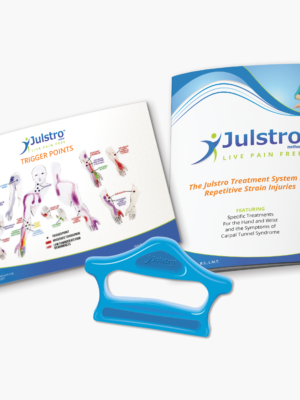Carpal tunnel syndrome is so common lately that everyone knows someone who has suffered from the searing wrist pain and numbness that are the common symptoms of the median nerve being impinged within the carpal tunnel. However, too many people don’t realize that these symptoms can come from areas that are far from their carpal tunnel.
Your median nerve originates all the way up at the base of your neck. It starts as one of three nerves (median, ulnar, and radial) that are contained in a bundle of nerves called the brachial plexus. The brachial plexus can be impinged by a neck muscle called scalenes.
At the front of your shoulder the brachial plexus has branched off into the three nerves and they pass under a tiny bone which is a part of your shoulder blade, and underneath the tendon of your pectoralis minor muscle. The pecs minor is at the top of your chest, close to your shoulder, and it draws your arm forward. As the muscle is repetitively strained it will shorten and pull the bone directly down onto the nerves, but since the median nerve is at the top of the group, this is the nerve that normally feels the impingement first.
Next, your median nerve passes underneath your biceps muscle and this strong muscle can press the nerve into the bone, causing numbness and tingling in your thumb and first two fingers. The nerve split off at your shoulder sent your ulnar nerve down the back of your arm and so your triceps can be pressing on your ulnar nerve and cause tingling in your ring and pinky fingers.
Next, your median nerve goes under the flexor muscles of your forearm, through your carpal tunnel, and into your hand. Your thick opponens pollicis muscle of your thumb is often the cause of the band across the top of your wrist to be pressing into your median nerve and impinging the nerve within your carpal tunnel.
There are also other points in your forearm that can cause the impingement of the nerve to your fingers, including your extensor muscles (top of your forearm).
The bottom-line is that carpal tunnel syndrome symptoms aren’t just coming from an impingement within your carpal tunnel. This is important to know before you consider surgically releasing your carpal tunnel.
Treating for carpal tunnel syndrome involves releasing the tension in all of the muscles that impinge on your median nerve, from your neck to your hand, and not just looking at one small area along the length of the nerve.
It takes more than just wearing a brace or a glove to prevent you from gripping your hand, and it’s a lot more than just looking at the small portion of your wrist where the nerve passes through your carpal tunnel. What needs to be done is to work on each muscle, force out the excess lactic acid, and then stretch the muscle fibers so they aren’t pressing on the nerves. Fortunately this isn’t difficult, but it is specific and requires some patience and focused energy.
I know because I had carpal tunnel syndrome in my left hand that was so bad I couldn’t lift the thumb and palm of my flat hand off a table and I had no feeling in my hand so I couldn’t even pick up a pen. It changed my life, and almost totally ended my career, and I’m glad to say that just treating the muscles brought my hand back without surgery. I wanted to share this with you today because I was just speaking to someone who called to say “thank you” because she is back to her career without having had surgery. She made my day, professionally I feel so fulfilled. 🙂
Life is good!
Julie
-
Julstro Systems
Julstro System for Hand/Wrist Pain and Numbness – DV
Rated 0 out of 5$197.00 Add to cart

